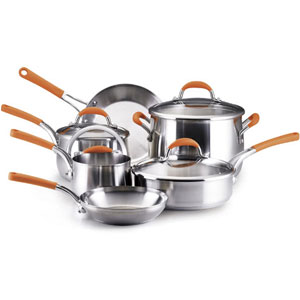How to Choose your Cookware
What factors entered into your last cookware procurement? Price is always a consideration. But were you influenced by the color, or that neat little glass lid that allows you to see inside? Or maybe the free utensils that came with it tempted you.
Much to the delight of purveyors, emotional inclinations and aesthetic trappings produce impulse purchases. I just had to have that red, (my favorite color), tea kettle, even though I own a perfectly functional stainless steel one. Not that there is anything wrong with these yearnings. We are human and indulging our passions makes us feel good. But if you’re a serious cook, you will need much more than your desires to guide you toward the proper equipment.
The primary consideration in choosing cookware is the material it is constructed from. Copper is the most expensive but also the best heat conductor. Superior heat conduction allows for even cooking. For example, you will find pans on the market made from stainless steel, a fair conductor, with a thick reinforced bottom containing aluminum, a better conductor.
The problem here is the heat conduction is not evenly dispersed throughout the pan and the bottom of your food will cook at an unacceptably disproportionate rate. You cannot braise food efficiently in such a pan. A pan with thorough and even heat conduction also eliminates “hot spots”. These are sections of the pan that are hotter than others, usually dead center in the bottom, which render browning your food uniformly a frustrating challenge.
Finally, a pan with good heat conduction rapidly responds to increases or decreases in temperature, thus allowing you quick control over the heat level. This attribute is necessary for successful sautéing.

